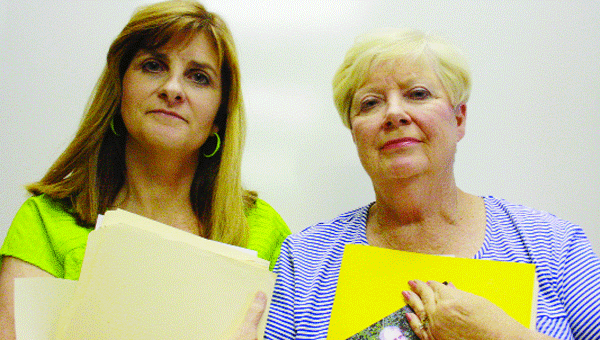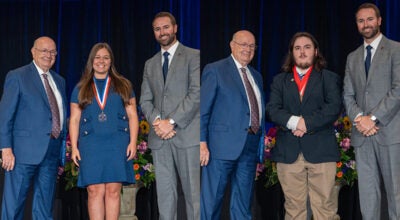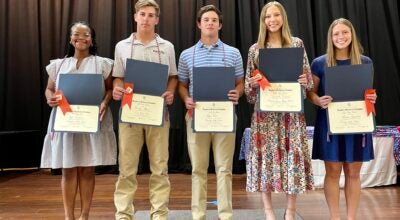Family: Why no DNA test?
Published 11:58 pm Wednesday, June 19, 2013

Terri Mathews and Iris Ates have not given up hope they can help prove their uncle and brother-in-law’s innocence.
Believes man charged here involved in 2005 murder
Jimmy Ates is a man convicted not once, but twice, for murdering his wife in 1991.
Now, his family believes one of the men arrested last week for the 2005 attempted murder and robbery of a Wing man holds the key to Ates’ freedom – this time for good.
This is how the story began.
Norma Jean Ates, 44, was discovered murdered in the couple’s Baker, Fla., home after a passerby called and reported the house was on fire. Mr. Ates, a teacher at Baker High School, had left at approximately 6:30 p.m. to attend the school’s baccalaureate service. His wife had stayed home after becoming ill, he testified. The two were high school sweethearts that had been married for 26 years and had been described as “inseparable.”
Court records show Mrs. Ates was shot seven times – including four times in the back –with a .22-caliber rifle as she ran down a hallway. Firefighters found her clothed body in the master bedroom under a mattress. The fire, which officials said was set to conceal the crime, was started with candle.
Nearly $1,000 in cash from Mr. Ates’ produce stand, an assortment of jewelry and the murder weapon were allegedly taken – none of which was ever recovered.
Six years later, Mr. Ates was indicted by an Oklaoosa County, Fla., grand jury, and convicted using “a loose timeline” and a process called comparative bullet lead analysis (CBLA), which allowed officials said they could match a bullet from a crime scene to a box of bullets owned by a criminal defendant.
In 2008, and with the help of Project Innocence, Mr. Ates became the first person in the nation to have a conviction overturned due to the FBI’s admission that comparative bullet lead analysis (CBLA) is junk science.
After two years of freedom, Ates was granted a retrial in 2011, but was again convicted.
Prior to the start of the retrial, family said he was offered a plea deal for time served if he admitted to the shooting. He said, “No.”
Wednesday, family said they believed in his innocence because of two main reasons – eyewitness testimony and DNA evidence. The first was not admitted during the trial, and the second is where the Covington County case against Jackie Darrell Long comes in.
Long, 54, was indicted this last week by the grand jury after he and his son, 27-year-old Shane Long, allegedly brutally assaulted Henry Jordan. The state contends that Jordan died as a result of those injuries and charged the two men with attempted murder, robbery and burglary.
So, how do Long and the Ates murder case connect?
“That’s easy,” said Iris Ates, Jimmy Ates’ sister-in-law. Her daughter, Terri Mathews, agreed.
“An eyewitness put Jackie Long at the scene, along with three other men, the night Norma was murdered,” she said. “It’s that simple, especially when we have the DNA.”
At the Ates scene, officials recovered DNA evidence from Mrs. Ates hand, a green, broken shoestring, boot prints and fingerprints – none of which belonged to Mr. Ates, experts and family alike testified.
Ann Finnell, Ates’ attorney during the retrial’s closing arguments, said, “We know who killed Norma Ates. We just don’t know his name. We know he wore shoes with green shoelaces; he stepped on Mrs. Ates’ blouse; he rummaged through her drawers looking for money; he took rings and watch off her dead body and took guns from the home.”
Mathews and her mother believe wholeheartedly Long is that man, now they’re asking someone – anyone – to help them prove it by having Long’s DNA compared to that found at the Baker murder scene.
Under the law, Long, as a federal parolee, should have a DNA sample on record in the Combined DNA Index System (CODIS) and the National DNA Index System (NDIS); however, DNA collected at the scene, which also included scrapings from under Mrs. Ates’ fingernails and three hair follicles found on a towel, was tested at a private lab and not entered into the database – meaning the results between victim and the man the family believes committed the crime have never been compared.
“This has been a journey of innuendos and rumors,” Iris Ates said. “I believe with all my heart in Jim’s innocence. They ruled out the DNA as being Jim’s or anyone else’s in our family. The murder happened around the same time as numerous other home invasions were happening in Baker. All of those are unsolved.”
“That crime scene was so violent,” Mathews said. “The person who did it had to be evil to do that to such a special lady. My uncle loved his wife.
“If we thought Uncle Jim was guilty, we’d pull the switch ourselves,” she said. “But in our hearts, we know he’s innocent, and we want the world to know it, too. Still, the women know it’s a long shot.
“But that’s not going to keep up from trying,” Iris Ates said. “We’re excited about this development (Long’s arrest). I know that nothing may ever come of (our case) but we have to try.”
The family said they are currently awaiting news of a federal appeal after asking that the “highly circumstantial” case be overturned. An answer is expected in the coming weeks.
Mr. Ates is currently serving life in prison at the Century, Fla., Correctional Institution.





